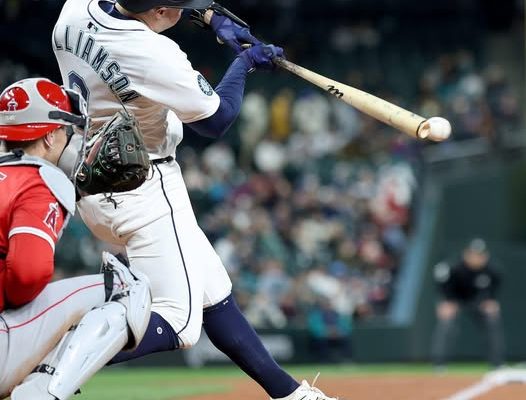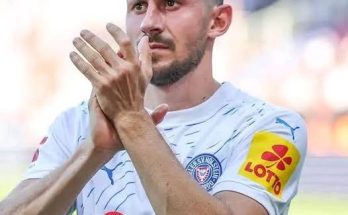A notable phenomenon has emerged within the Seattle Mariners fan base in recent weeks, as a curious divide has taken shape over the potential return of former third baseman Eugenio Suárez. While trade rumors have placed Suárez in the Mariners’ orbit once again, ostensibly to solidify a shaky offensive infield, a surprisingly vocal faction of the fan base has pushed back against the idea—not out of any dislike for Suárez himself, but rather in defense of current third baseman Ben Williamson. In a move that has left analysts and traditional baseball purists scratching their heads, Williamson has become something of a cult favorite in Seattle. His admirers praise his elite glove work, consistent hustle, and notably rare ability among modern players to avoid strikeouts, even if that’s not translating to an impactful bat. At the heart of the growing debate lies a fundamental question that has haunted teams for generations: how much should defense matter when offense is lagging far behind?
Williamson’s rise in popularity seems to be rooted less in what shows up in the box score and more in what fans perceive as intangible qualities. His defensive acumen is difficult to dispute; advanced metrics consistently show him to be among the best defenders at third base in the league. His range, arm strength, and ability to make tough plays down the line have all drawn praise from Mariners broadcasters and coaches alike. That, combined with a tireless work ethic and a reputation for being “coachable” and “blue-collar,” has endeared him to a significant segment of Seattle’s fan base, particularly those who prioritize grit and effort over highlight-reel home runs.
However, when it comes to production at the plate, the numbers paint a less flattering picture. Williamson currently holds a batting average of .262, which, while respectable on the surface, becomes less impressive under closer scrutiny. His on-base percentage is a concerning .297, dragged down by an unusually low walk rate of just 4.4%. In a league where even light-hitting middle infielders are encouraged to work counts and draw free passes, Williamson’s inability to consistently get on base via walks has drawn quiet criticism from analysts, even as fans continue to prop him up as a future cornerstone. Additionally, his lack of power is glaring. A .320 slugging percentage and a total of just three stolen bases contribute to a weak .618 OPS, placing him well below league average for a third baseman.
The fan debate around Williamson reached a new crescendo when reports surfaced of the Mariners’ potential interest in bringing back Eugenio Suárez. A former fan favorite in his own right, Suárez offers a far more dynamic offensive profile, albeit with more strikeouts. His power alone—something the Mariners sorely lack—is enough to alter games. But his reintroduction into the lineup would likely force Williamson into a bench role or an awkward shift elsewhere on the diamond. That’s where the controversy begins. Suggestions have emerged from fans trying to preserve Williamson’s presence in the starting lineup by reshuffling positions. Some propose Suárez take on the designated hitter role, while others advocate for Jorge Polanco moving to second base to replace Cole Young, who, despite his top-prospect status, hasn’t won over the Williamson camp. Still others suggest a move for Williamson to second base, despite the clear risks of shifting a third base specialist into a position with different responsibilities and angles.
But even those scenarios feel like attempts to bend the lineup around one player whose offensive profile simply doesn’t match his perceived value. The Mariners, a team with legitimate playoff aspirations, cannot afford to give away plate appearances in the name of sentimentality. It’s not that Williamson is a complete liability—his glove justifies his place in certain situations—but that his bat currently removes any real upside from his overall contribution. Comparing him to Josh Rojas, who manned third base for much of last season, highlights the issue more clearly. Rojas, while far from a stellar offensive player, still managed a .225 batting average, a .304 OBP, and a .336 slugging percentage, good for a .641 OPS—higher than Williamson’s. Rojas added eight home runs, stole ten bases, and compiled a 2.2 WAR season despite his own inconsistency. He showed occasional flashes of offensive production, even if they came in streaks. Williamson, by contrast, has not demonstrated any similar bursts of productivity. His offensive game is steady, but in a way that lacks any meaningful impact.
What’s particularly interesting is the way in which Williamson’s defensive potential has become almost mythologized. Some within the fan base talk about him as a future Gold Glove winner—a legitimate possibility, given his current metrics. But the Mariners’ own history offers a cautionary tale. Evan White, a former top prospect and actual Gold Glove winner at first base, never managed to hit at the major league level and eventually faded out of relevance, his defensive brilliance rendered moot by an anemic bat. The same fate could await Williamson if the Mariners don’t make hard decisions based on numbers rather than narratives.
And yet, within online forums, comment sections, and sports talk radio, defending Williamson has almost become an identity. Any suggestion that he is unproductive is met with accusations of bias or short-sightedness. The Mariners’ loyalists insist his bat will come around, that his line drive contact and low strikeout rate are signs of future growth. But in the harsh landscape of modern baseball, hope is not a strategy. A playoff-contending team does not operate on sentimentality. They operate on run production, OBP, SLG, and efficiency. Defensive specialists are valuable, yes, but only when their skill set doesn’t come at the cost of regular run production. Baseball history is littered with dazzling defenders who simply couldn’t cut it at the plate.
The truth, as it stands, is that Williamson’s most realistic role on a team like the Mariners is as a late-inning defensive replacement. His skill set mirrors that of Charles Gipson back in 2001—a player whose contributions were situational, not central. Gipson was valuable in those tight, late-season contests when defense became paramount and every out counted. He wasn’t in the lineup to drive in runs, but rather to preserve leads. That could very well be Williamson’s future. And there’s no shame in that—role players are often the difference between winning and losing in October. But pretending he’s a long-term solution at third base—or worse, reconfiguring the team to accommodate his presence—risks undermining the broader goal of putting the best possible team on the field every day.
Inevitably, any critique of Williamson’s limitations draws pushback. Fans are emotionally invested in their favorites, especially when those players symbolize effort, humility, or the “right way to play the game.” But baseball is unforgiving. Sentiment doesn’t score runs, and admiration doesn’t translate into wins. The Mariners have a window right now, a genuine opportunity to make a deep postseason run. To squander that by clinging to fan favorites at the expense of production would be a costly mistake.
As the trade deadline approaches and front-office decisions become more urgent, the Mariners must face the facts. Eugenio Suárez, flaws and all, provides a significant upgrade at a position where offense is not just helpful—it’s essential. If Williamson wants to secure a long-term role, he must find a way to contribute more meaningfully at the plate. Otherwise, the team must do what playoff-caliber organizations do: make tough choices, even when they aren’t popular.



